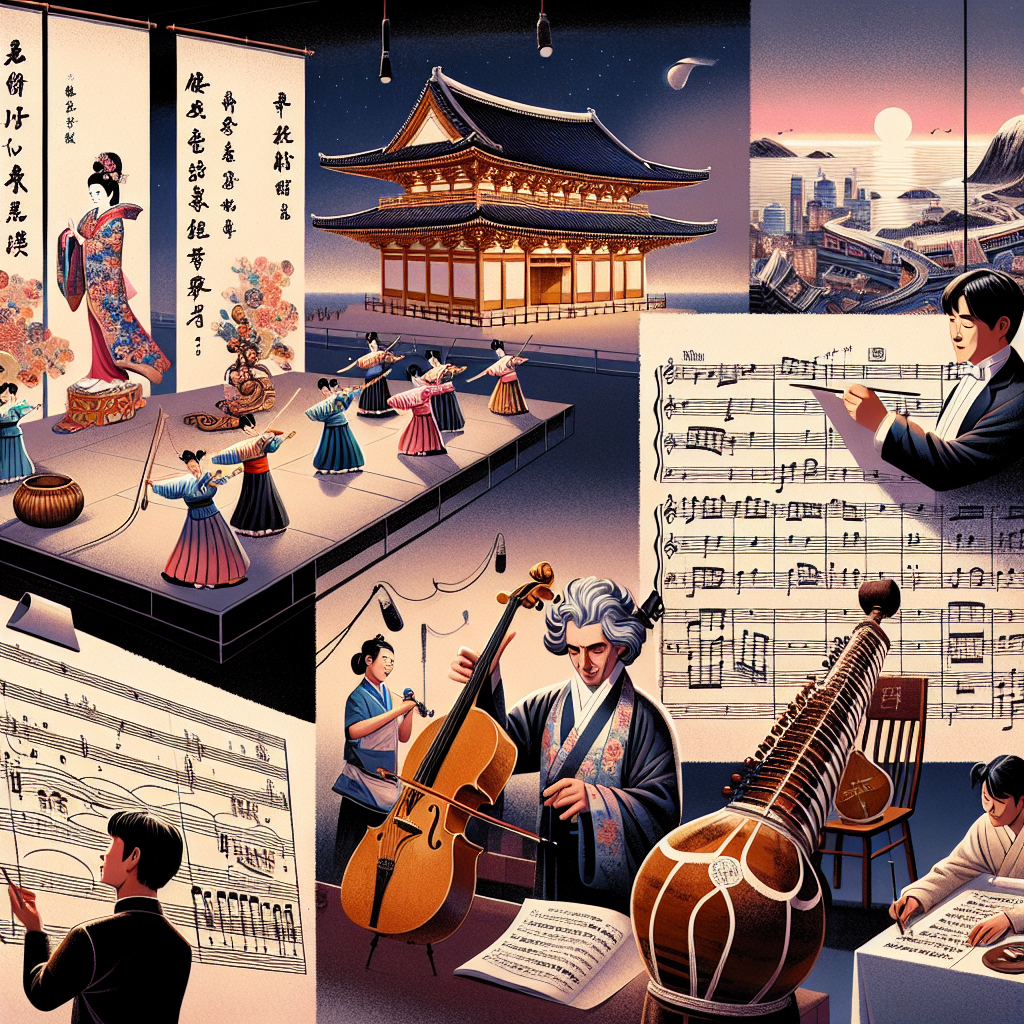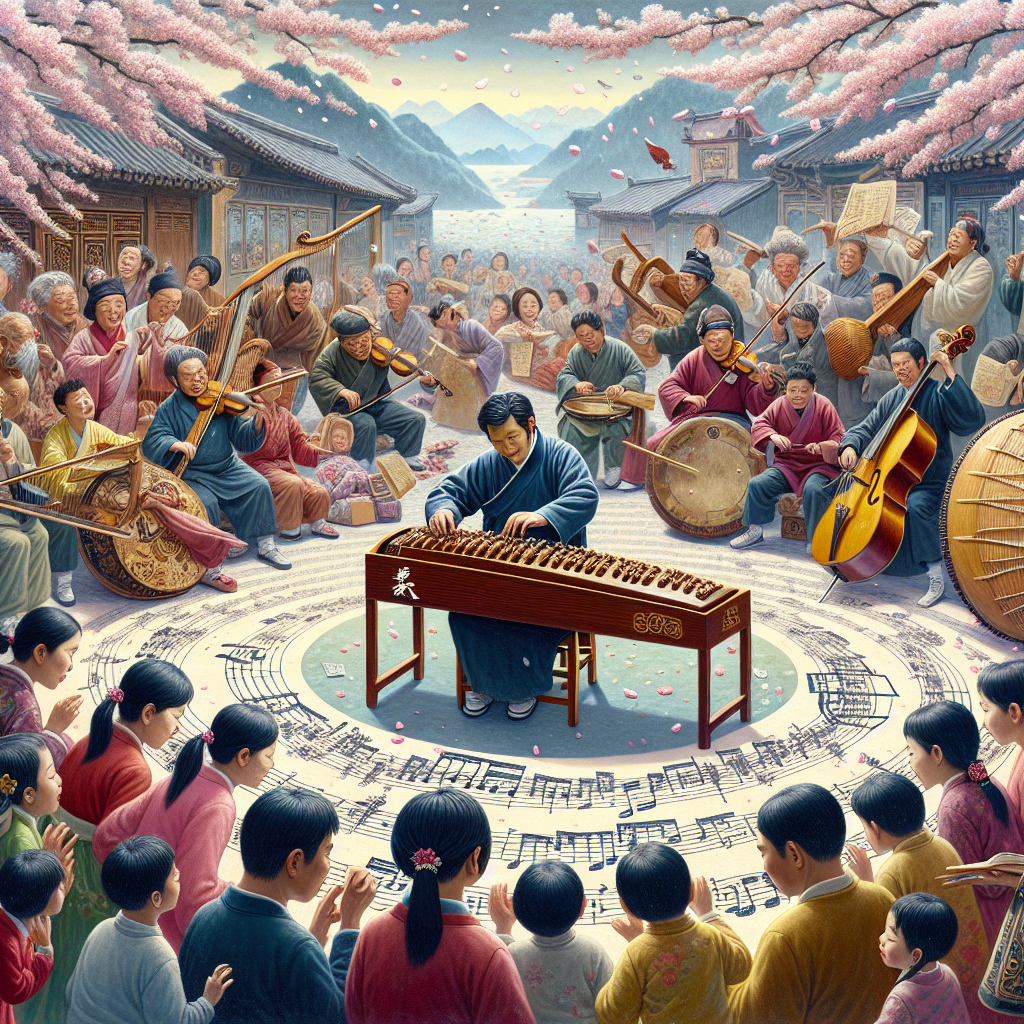
Beethoven in Asia: Cultural Adaptations and Inspirations
Ludwig van Beethoven, a towering figure in Western classical music, has had a profound impact globally, including in Asia. Unlike many Western composers who didn’t gain broad popularity until the 20th century, Beethoven’s influence penetrated Asian culture much earlier. This penetration was not merely a case of passive adoption; it sparked significant cultural adaptations and inspired various forms of artistic expression across the continent. His works became a bridge between Eastern and Western musical traditions, contributing to a unique blend of cultural synthesis. This article will dive into how Beethoven’s compositions were introduced in Asia, how they inspired local musicians, and how they have been incorporated into contemporary Asian culture. It will also explore Beethoven’s significance in education and popular media in Asia. These adaptations and inspirations not only tell us about the enduring appeal of Beethoven’s work but also how global cultural exchanges are far from one-sided. They’re reciprocal, enriching both the originating and receiving cultures.
Beethoven’s Early Introduction in Asia
The cultural transmission of Beethoven’s work to Asia began in the late 19th and early 20th centuries, primarily through the efforts of European colonialism, missionary activities, and globalization. In countries like Japan, China, and India, Western classical music started being taught in schools and conservatories. Beethoven’s compositions were among the first to be introduced due to their musical complexity and emotional depth. Japan was one of the earliest adopters of Western classical music in Asia. By the early 20th century, Japanese society had embraced Beethoven’s works, and his Symphony No. 9 (“Ode to Joy”) became especially significant. In 1918, during a period of national hardship, Beethoven’s Symphony No. 9 was performed to lift the people’s spirits, creating a tradition that persists today. This work is now a symbol of hope and unity, performed widely across the country at the end of every year. Similarly, in China, Beethoven’s influence grew dramatically during the mid-20th century. Despite initial suppression during the Cultural Revolution, his music resurfaced to play a significant role in education and media. Beethoven’s compositions became part of the curriculum in music schools, contributing to the nurturing of future Chinese classical musicians.
Beethoven’s Influence on Asian Composers
The works of Ludwig van Beethoven have had a profound impact on contemporary Asian composers. They not only studied Beethoven for his technical proficiency but also drew inspiration from his emotional depth and philosophical notions. This inner fusion resulted in compositions that are a blend of Western and Eastern musical traditions, reflecting Beethoven’s influence. Toru Takemitsu, a celebrated Japanese composer, stands as an exemplary figure in this regard. Takemitsu was deeply influenced by Western composers, and Beethoven had a significant presence in his formative years. Takemitsu’s works often blend traditional Japanese music with Western classical styles, creating pieces that resonate with emotional depth akin to Beethoven’s. His piece “November Steps” is a notable example of this synthesis, combining traditional Japanese instruments with Western orchestral settings. Chinese composer Tan Dun is another contemporary artist who cites Beethoven as an influence. Known for his scores in films like “Crouching Tiger, Hidden Dragon,” Tan Dun’s works often integrate classical Chinese instruments with Western orchestral music. Like Beethoven, Tan Dun seeks to transcend cultural barriers, using music as a universal language of emotional and philosophical expression.

Beethoven in Contemporary Asian Culture
Beethoven’s influence isn’t confined to formal music education and composition; it permeates various aspects of contemporary culture in Asia, from movies and television to popular music and public events. In Japan, Beethoven’s Symphony No. 9, known as “Daiku,” has transcended its original classical form to become a part of the national cultural fabric. It is commonly performed in schools, and during the holiday season, massive choirs often convene to perform it, involving both professional musicians and amateurs alike. In South Korea, Beethoven’s pieces are frequently featured in televised talent shows and dramas. South Korean films and TV shows have utilized his works to evoke profound emotional responses from audiences. For example, Beethoven’s Moonlight Sonata has been employed in various K-dramas to underscore moments of emotional tumult or poignant reflection. Movies in China have also employed Beethoven’s music to great effect. Filmmakers use his compositions to highlight dramatic scenes or significant moments, ensuring that his music reaches wider audiences beyond classical concert halls. This public prominence ensures that Beethoven remains a household name, continuing to inspire and move people across different forms of media.
Educational Institutions and Beethoven
Beethoven’s contributions to music education in Asia are substantial. Many music schools and conservatories across the continent prioritize the study of his works, using them as fundamental teaching tools for aspiring musicians. Beethoven’s compositions are included in the curriculum at prestigious institutions like the Central Conservatory of Music in Beijing, the Tokyo University of the Arts, and the Korean National University of Arts. In Japan, elementary and secondary education often includes Beethoven’s works as part of the overall curriculum. This early exposure ensures that students not only appreciate the significance of Western classical music but also understand its broader cultural and historical context. Government initiatives often support such educational endeavors, underscoring the importance of a well-rounded musical education. Competitions and festivals dedicated to Beethoven’s works also proliferate across Asia. These initiatives provide platforms for young musicians to showcase their talent and gain exposure to different interpretations of Beethoven’s music. Such opportunities further cement his influence in the realm of classical music education.
Challenges and Cultural Adaptations
While Beethoven’s music has found a home in Asia, its adoption has not been without challenges. Cultural adaptations require not just the translation of musical notes, but also an understanding of the emotional and philosophical underpinnings of the works. For instance, the nuances of Beethoven’s struggles and triumphs need to be communicated in a manner that resonates with an Asian audience. One significant challenge has been the Western-centric framework of classical music education. Many educators in Asia have had to incorporate local musical traditions to make Beethoven’s works more relatable. For instance, in Japan, adaptations of Beethoven’s compositions are sometimes played on traditional instruments like the koto or shakuhachi, blending Eastern tonalities with Western harmonies. Efforts to translate Beethoven’s German texts into local languages also encounter difficulties. Conveying the depth of humility and resilience encapsulated in pieces like Symphony No. 9’s “Ode to Joy” in a language that maintains its original spirit can be challenging. Nevertheless, these cultural adaptations have often successfully conveyed Beethoven’s universal themes of struggle, perseverance, and joy, allowing his music to transcend cultural and linguistic barriers.
Conclusion
Beethoven’s enduring influence in Asia is a testament to the universal power of music. His compositions have transcended geographical and cultural boundaries, becoming integral to both formal and informal aspects of Asian life — from education and public performances to movies and personal inspiration. This reciprocal cultural exchange enriches both Western and Eastern traditions, fostering a shared global heritage. As we look to the future, Beethoven’s music will continue to inspire new generations of musicians and composers across Asia. The blend of Western techniques and Eastern traditions will likely result in innovative and emotionally resonant compositions, further solidifying Beethoven’s role as a global cultural bridge. In conclusion, Beethoven’s influence in Asia exemplifies the profound impact that one composer’s work can have across time and space. It underscores the power of music to unite different cultures, celebrate shared human experiences, and inspire continuous artistic innovation.